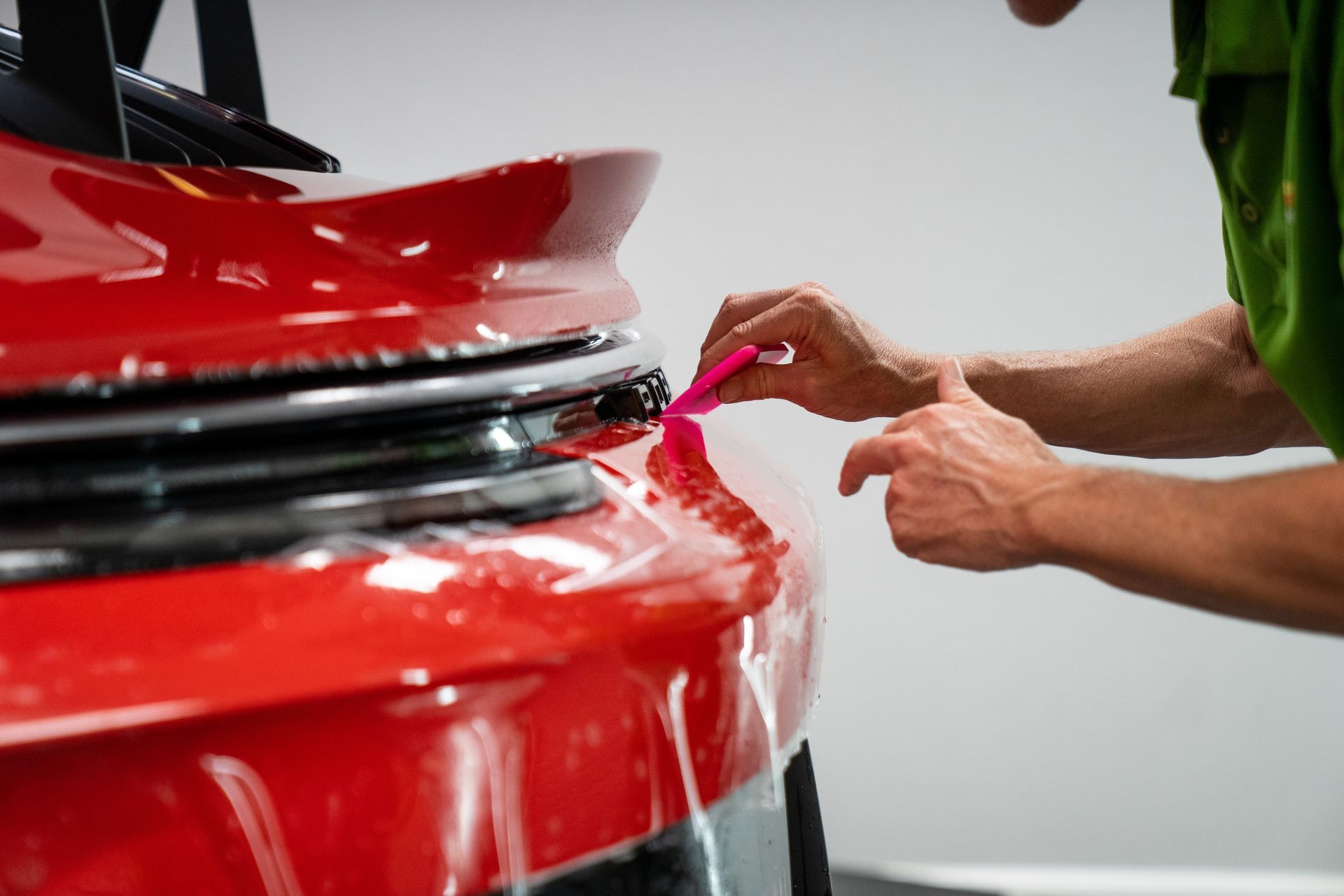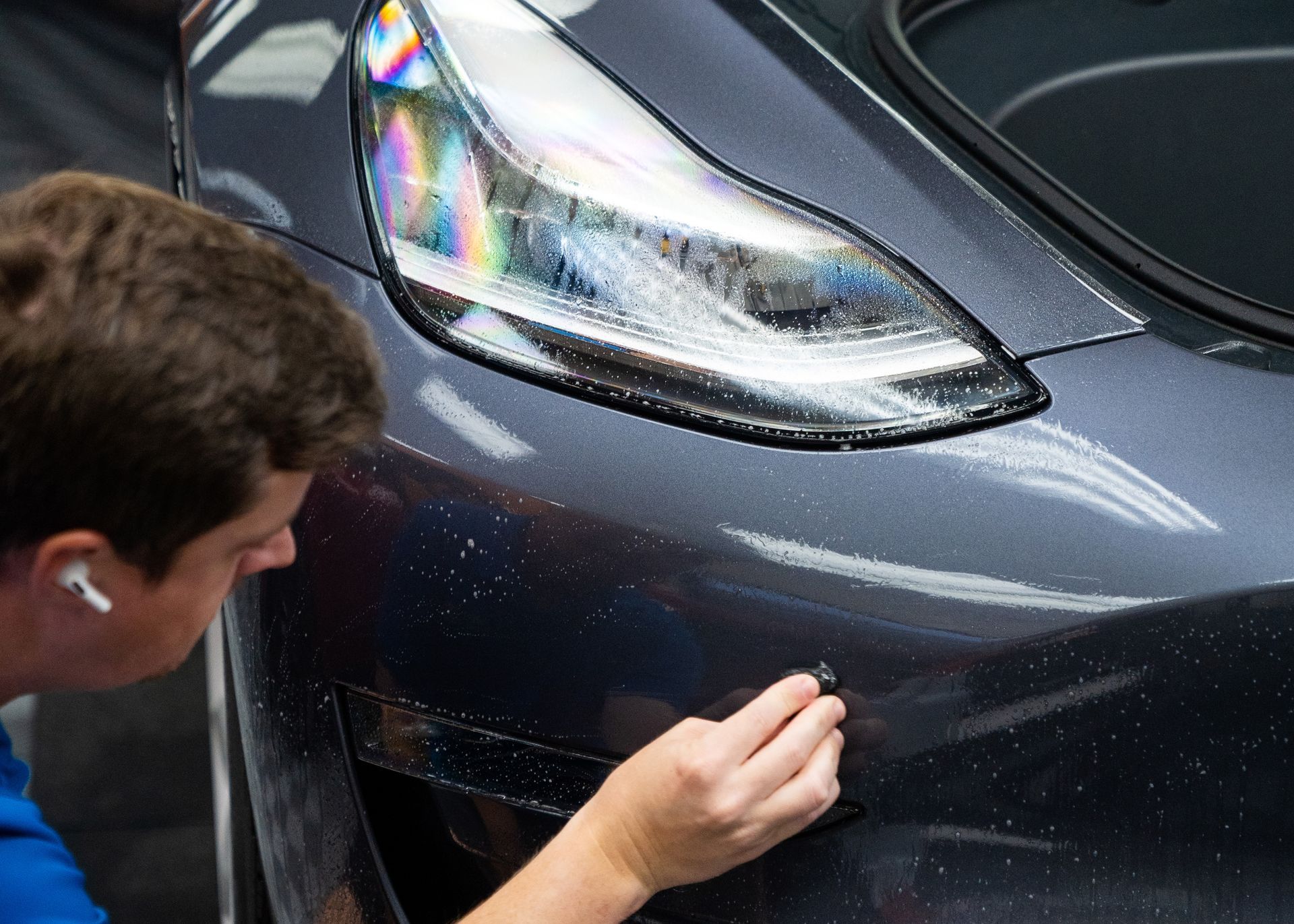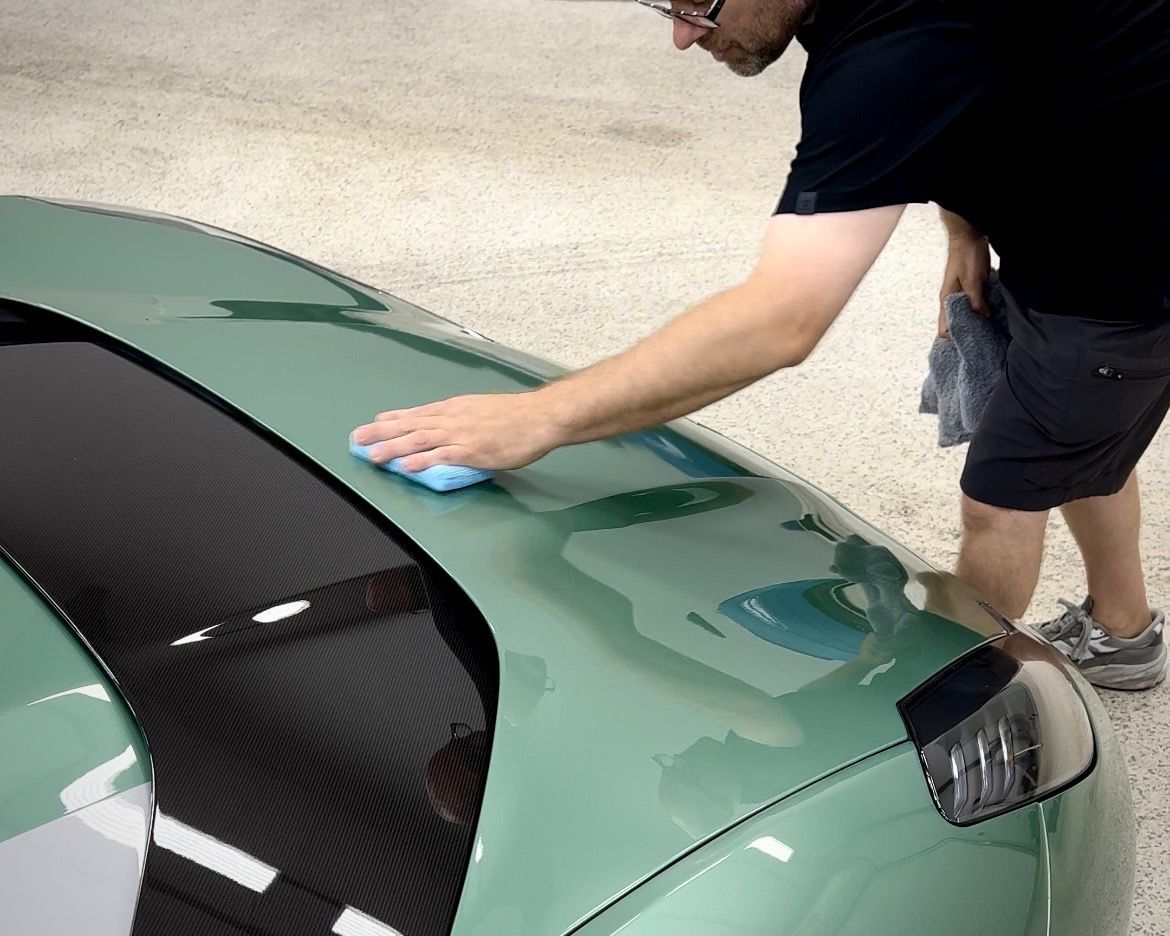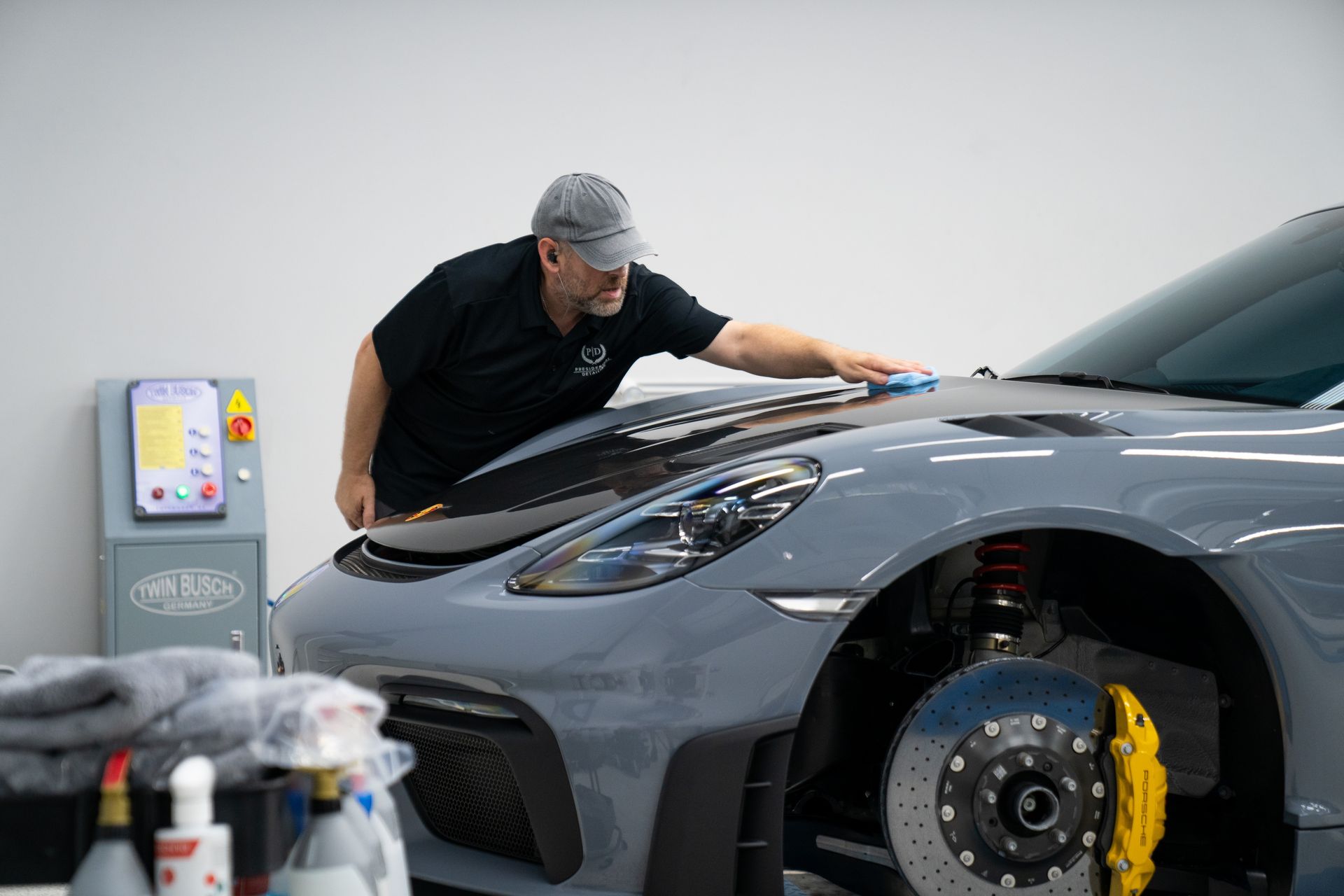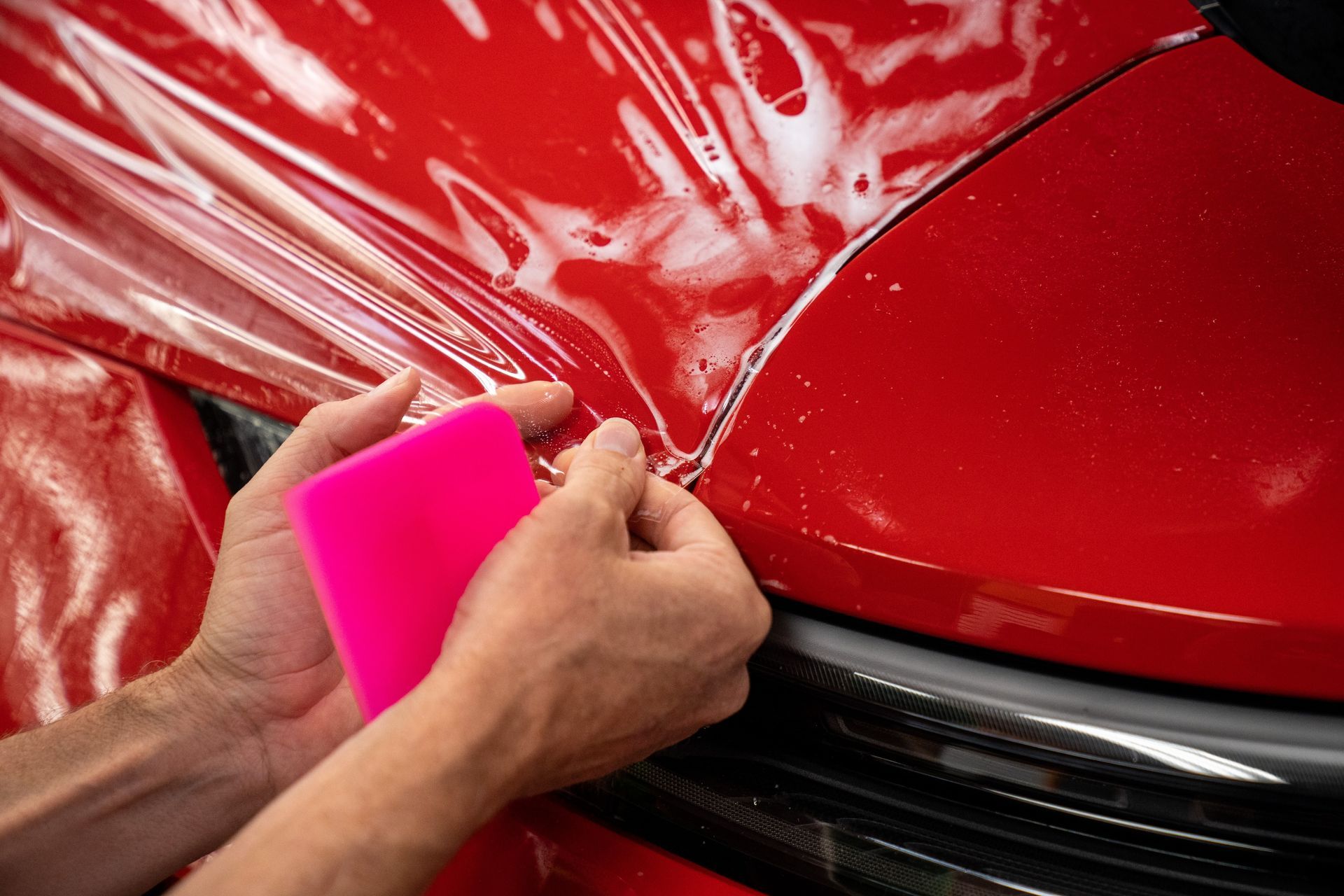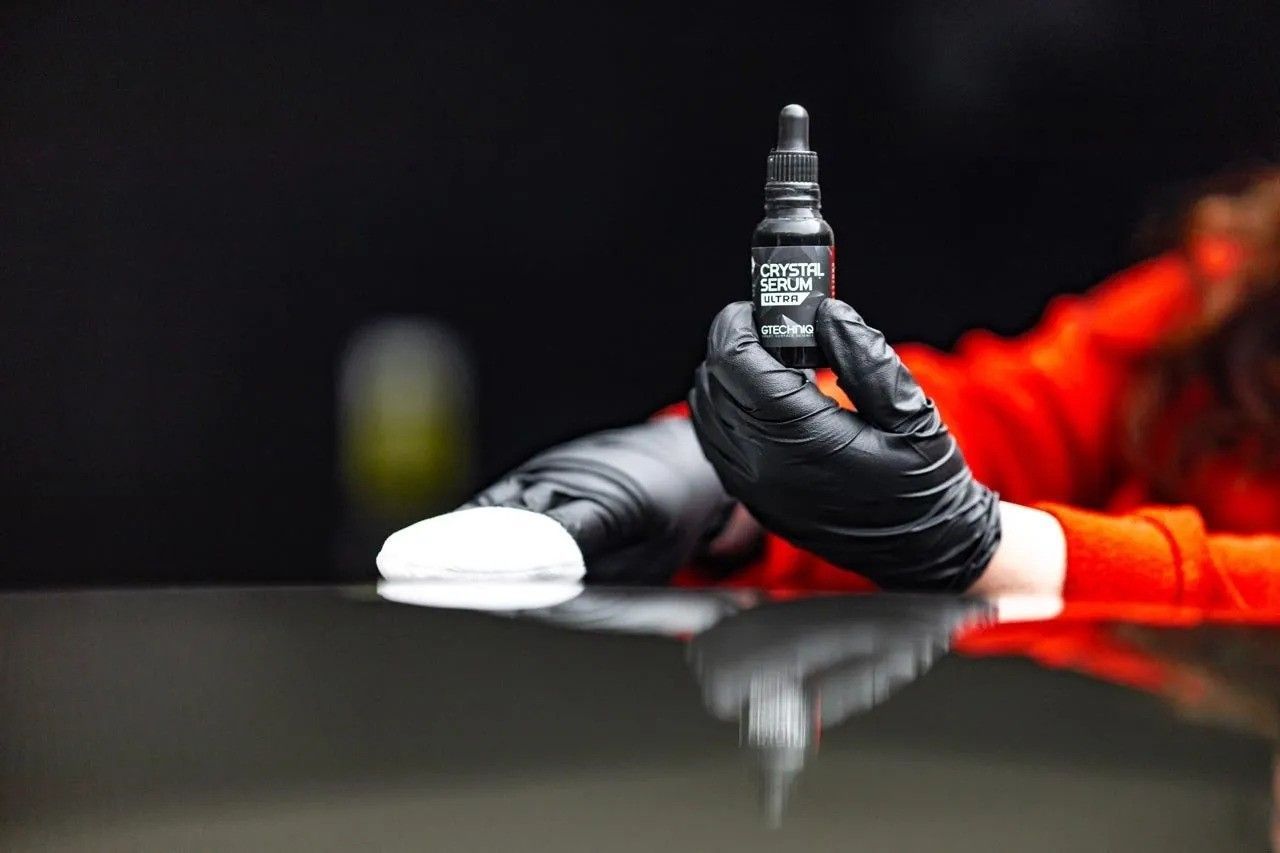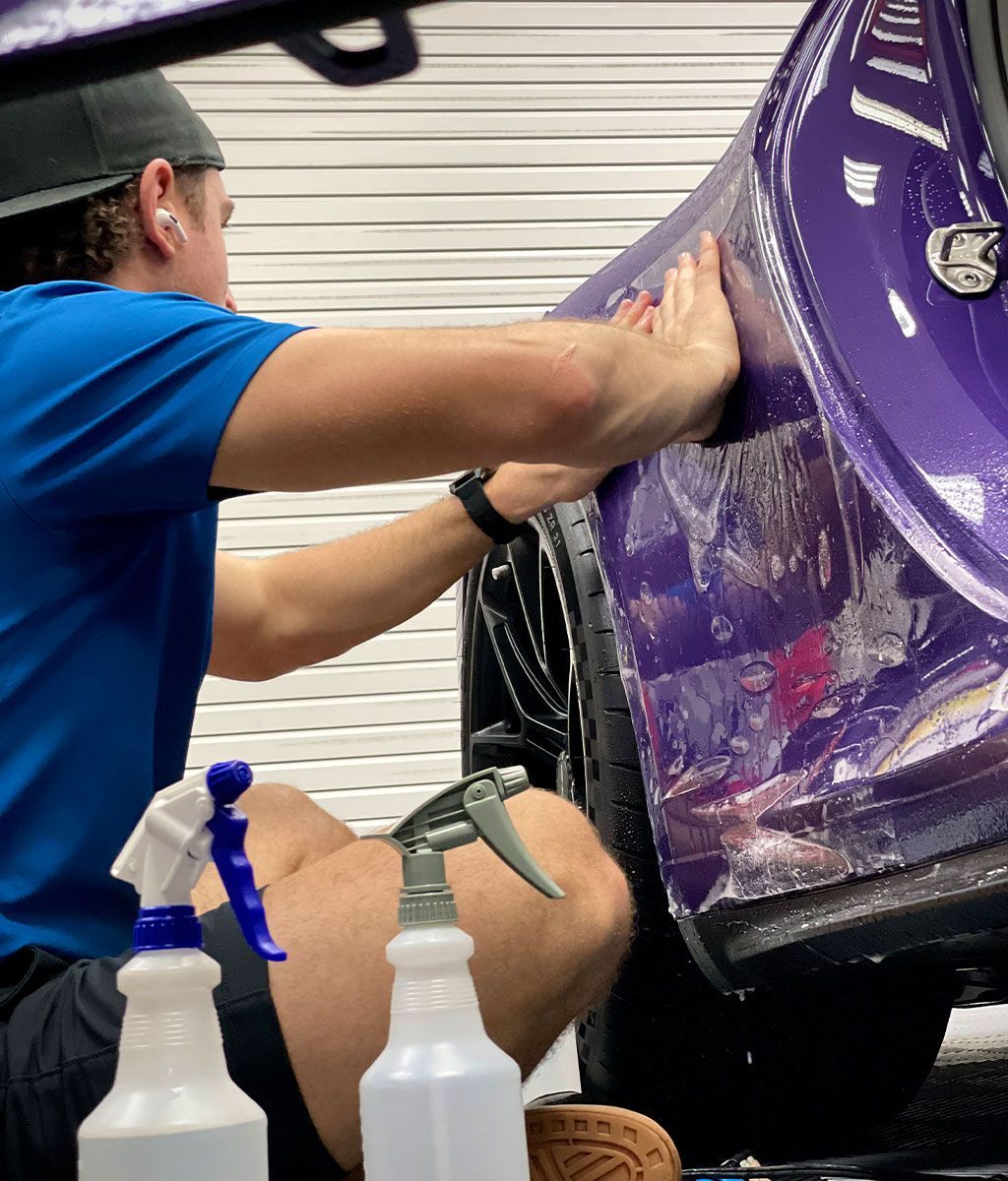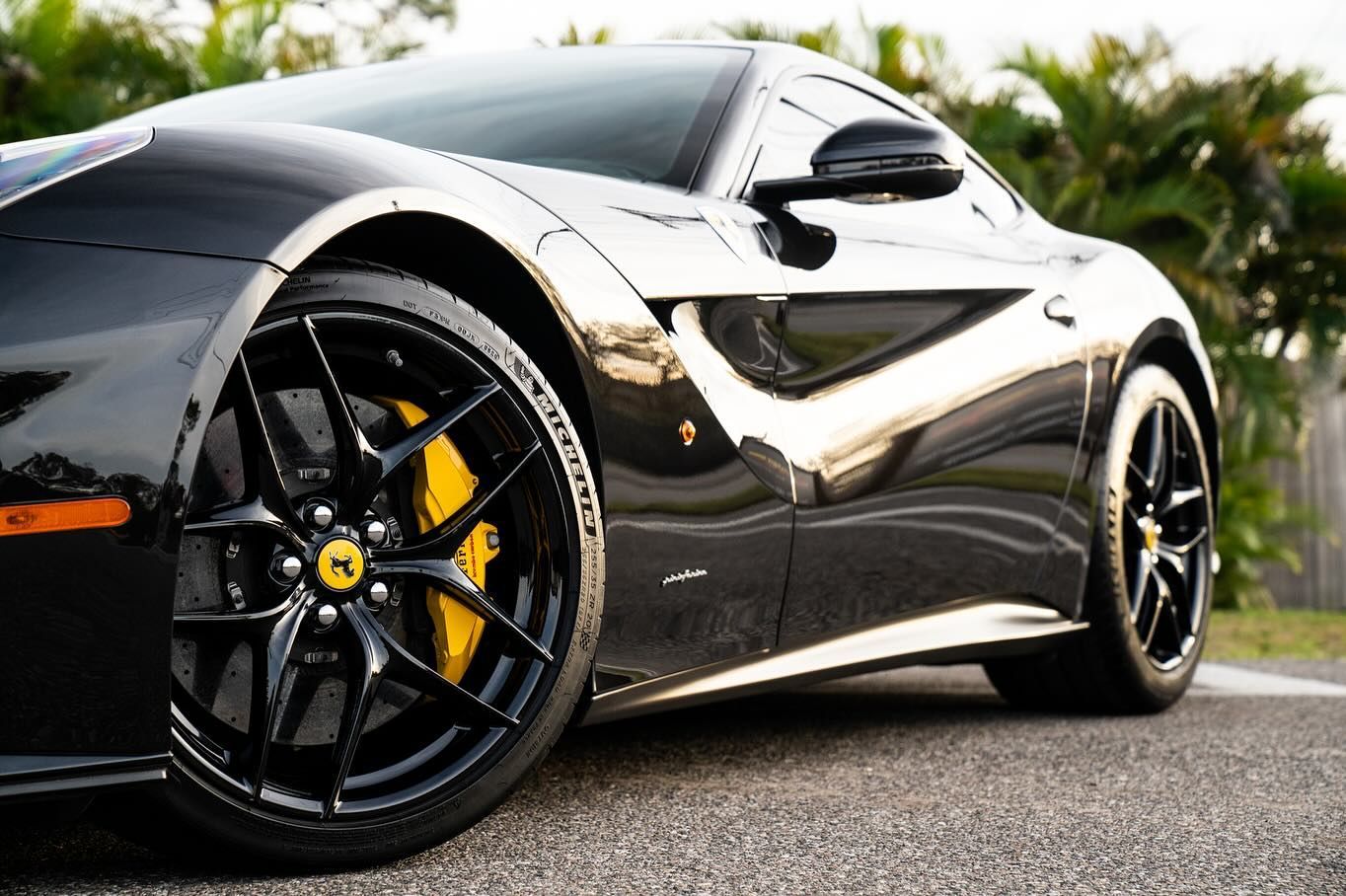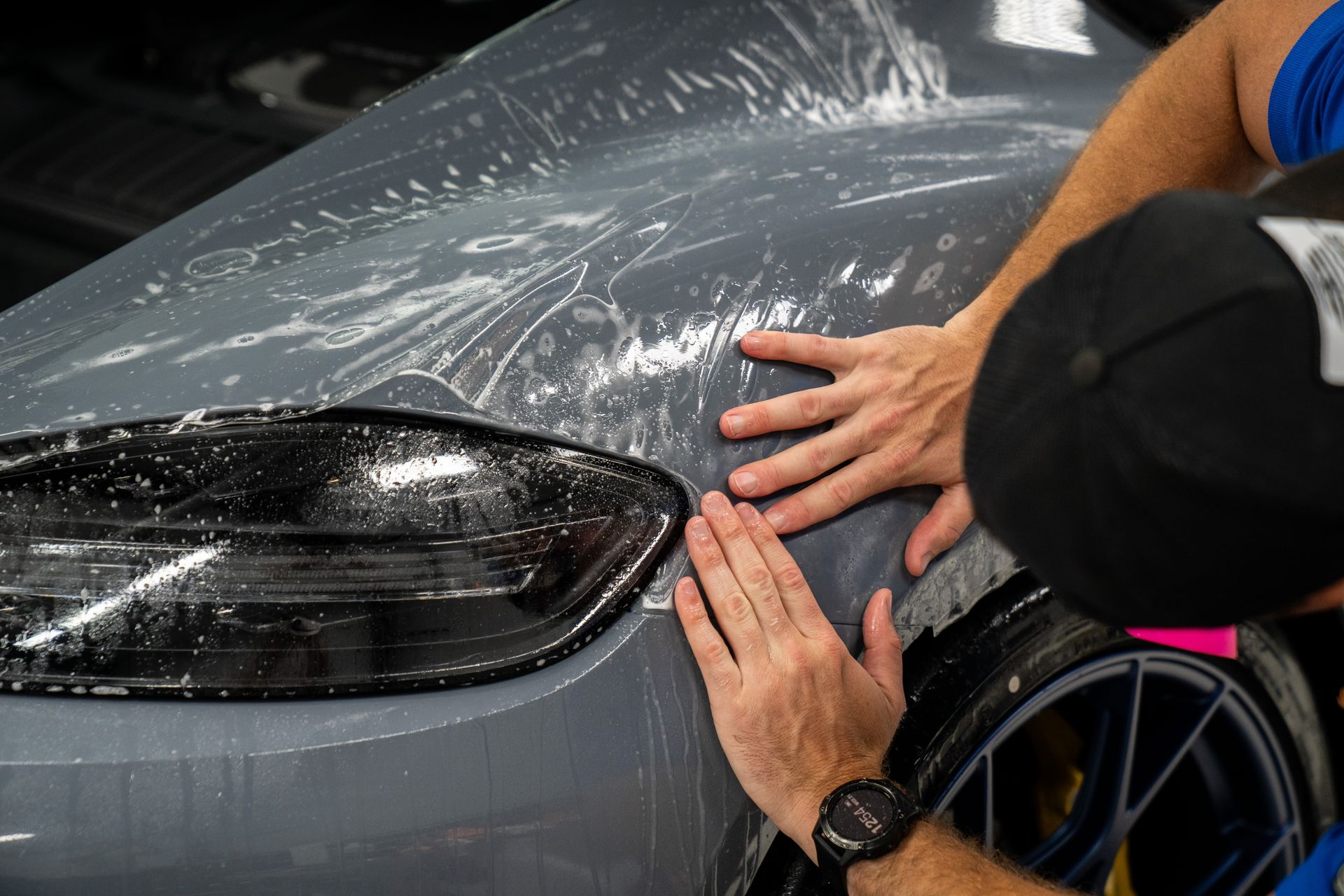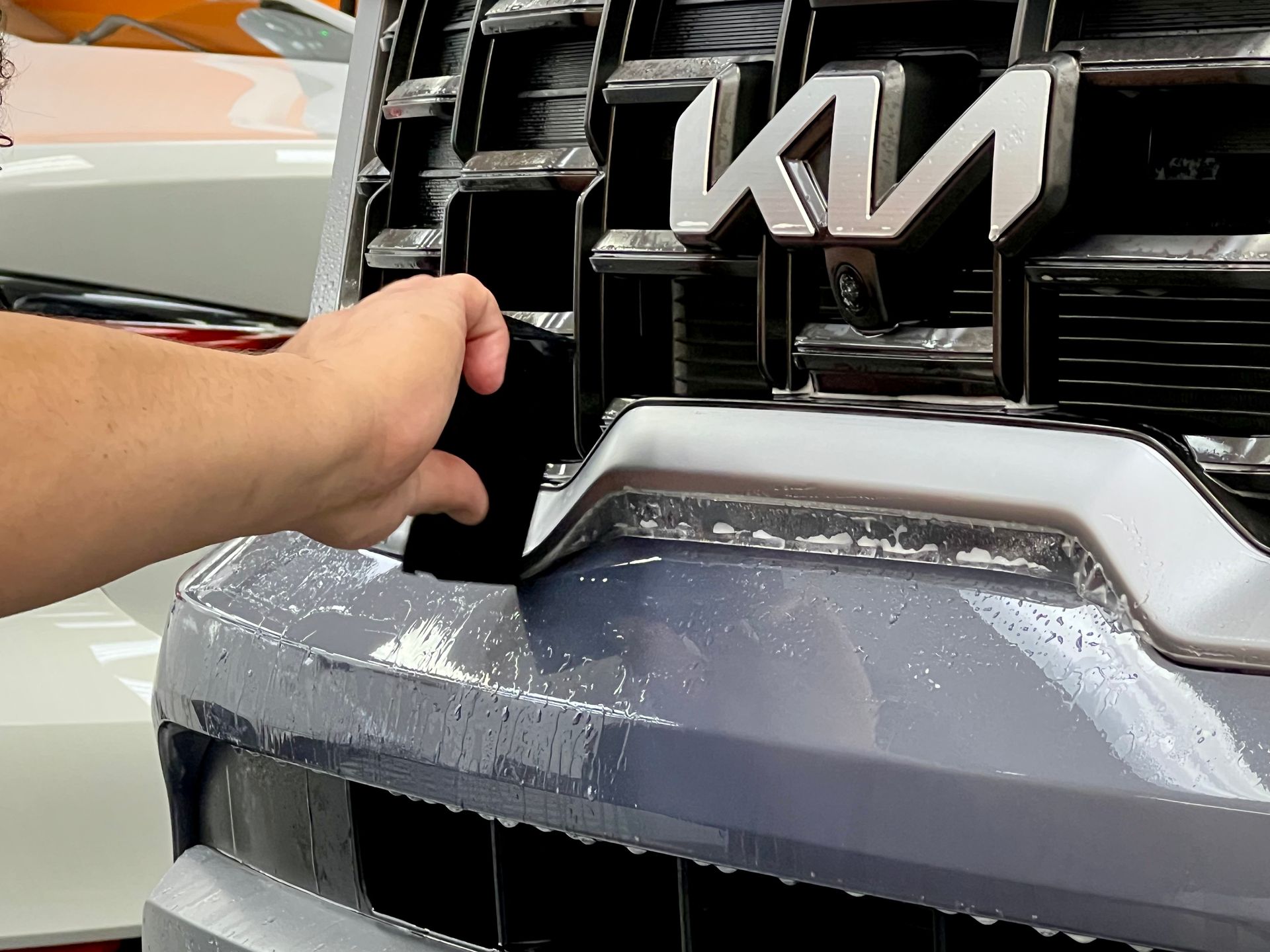How to Identify Quality Paint Protection Film & Key Features to Look For
CALL (813) 723-9679
GET A FREE ESTIMATEIdentifying good quality paint protection film is critical if you desire long-lasting protection for your vehicle's paint job. This top-notch film is designed to stick around, resisting harsh sun rays, road junk, and other unpleasant things that could damage your car’s shiny coat. Now you may ask, how thick should it be or how clear? It’s not as simple as thicker being better or more clarity equating to higher quality. The real measure of PPF lies in its robust adhesive power, which secures it firmly on the vehicle's skin, maintaining its color over time even under serious weather challenges.
When searching for quality paint protection film, it's crucial to consider the material's durability, clarity, self-healing properties, thickness measured in mils, and the extent of coverage. Additionally, be sure to inquire about the warranty and installation process and read customer reviews to make an informed decision.
Recognizing High-Quality Paint Protection Film
High-quality paint protection film or clear bra serves as your vehicle's shield against environmental elements, safeguarding it from UV rays, road debris, and contaminants. It needs to be durable and capable of withstanding tough conditions without losing its protective properties. How do you ascertain if a PPF is up to par?
Firstly, seek out a film renowned for its durability, ensuring it can withstand intense sunlight, rocks and gravel on the road, or acidic substances while maintaining its clear appearance over time. A superior paint protection film should exhibit exceptional resistance to discoloration, effectively preserving your vehicle's paintwork. Moreover, adhesive properties are critical markers of quality in a paint protection film. Strong adhesion guarantees that the film adheres properly to the vehicle's surface and remains in place for an extended period—no one wants a PPF that starts peeling shortly after application.
To put it simply: When selecting a clear bra for your vehicle, aim for one that acts like a protective second skin, firmly clinging to your car and becoming an integral part of its exterior—quite similar to how we expect sunscreen to remain in place even after sweating at the beach.
EXAMINING PHYSICAL ATTRIBUTES: THICKNESS AND TRANSPARENCY
When evaluating paint protection film, its physical attributes play a crucial role in determining its quality and effectiveness at safeguarding your vehicle's paintwork. Let's delve into the significance of thickness and transparency in PPF to help you make an informed decision when selecting the right protection for your vehicle.
Thickness: A paint protection film is often measured in mils, with thicker films generally offering better protection against impacts from debris, stone chips, and scratches. The added thickness acts as a stronger barrier, reducing the likelihood of damage to your vehicle's paint. However, it's essential to strike a balance because overly thick films may pose challenges during installation and could struggle to conform well to complex curves on your vehicle's surface. This can result in unsightly air pockets or creases, negatively impacting the appearance of the PPF installation. For instance, imagine trying to wrap a gift with extremely thick wrapping paper. While it might provide a high level of protection for the gift, the excess thickness could make it difficult to fold neatly around corners and edges. Similarly, an excessively thick film may encounter similar issues during installation on the contours of your vehicle.
Transparency: Transparency goes hand in hand with aesthetics when it comes to PPF. After all, you want to preserve your vehicle's original paintwork without compromising its appearance. High-quality paint protection film is designed to maintain exceptional optical clarity, almost blending invisibly with the vehicle's surface. This guarantees that the protective film won't cause any distortion to the paint underneath, preserving its sheen. While some lower-quality paint protection film products may lose their transparency over time due to yellowing or hazing, premium-grade films are engineered to resist such degradation, offering long-term optical clarity. The thickness and transparency of PPF play crucial roles in determining both its protective capabilities and its impact on your vehicle's overall appearance.
Professional Installation vs. Self-Application
When it comes to applying paint protection film to your vehicle, you're faced with a choice: entrust the task to a professional installer or take on the challenge yourself. Each approach has its own set of considerations, so it's important to weigh the pros and cons before making a decision.
Professional Installation: Opting for professional installation allows you to benefit from the expertise and precision of trained professionals. These installers have the knowledge and experience to apply PPF seamlessly, ensuring proper adhesion and a flawless finish. They are skilled in handling different vehicle models and can tailor the application to fit specific contours and shapes. This means they can effectively cover vulnerable areas without compromising the aesthetics of the vehicle. Professional installers are equipped with specialized tools that allow them to work efficiently while minimizing the risk of common issues such as air bubbles, creases, or misalignment.
Self-Application: Some individuals may be inclined to take a hands-on approach by using self-application kits. While these kits are designed for personal use, they may pose challenges for individuals without prior experience working with PPF. Improper installation can lead to issues such as air bubbles, creases, or misalignment, which not only compromise the protective function of the film but also affect the overall appearance of the vehicle. It is important to recognize that working with paint protection film requires careful attention to detail and precision. Without adequate experience or familiarity with the application process, achieving a seamless finish can be difficult. The complexity intensifies when faced with curved surfaces or intricate shapes on modern vehicles. Moreover, aspects such as trimming the film to fit specific contours and ensuring proper adhesion without imperfections require a level of skill that is honed through extensive practice.
Given these considerations, it's essential for individuals to assess their comfort level with handling intricate tasks and their willingness to invest time and effort into mastering the application process before deciding between professional installation and self-application.
Evaluating PPF's Edges and Finish
When examining paint protection film for your vehicle, paying close attention to the details—specifically, the edges and finish—is crucial. Well-defined, inconspicuous edges that seamlessly blend with the vehicle's contours are a hallmark of high-quality PPF.
Edges play a vital role in the overall appearance and functionality of the paint protection film. When properly cut and installed, the edges should be virtually invisible, integrating seamlessly with the vehicle's surface. Look out for any signs of uneven or lifted edges, as these could compromise the protective capabilities and aesthetics of the film over time. Additionally, inspect the finish of the PPF. A smooth finish without noticeable texture or an "orange peel" effect is indicative of a superior product. The goal is for the film to maintain a similar appearance to the original paint, ensuring that it enhances rather than detracts from the vehicle's aesthetics.
It should be noted that not all PPF finishes are created equal. Some may offer gloss, matte, or satin finishes, each with its own unique attributes. Gloss finishes provide a sleek, reflective appearance, while matte finishes offer a non-glossy, smooth look. On the other hand, satin finishes strike a balance between gloss and matte, providing a subtle sheen. Imagine running your hand over your car's surface—high-quality paint protection film should feel just as smooth as the original paint, with no discernible difference in texture or appearance. Any roughness or inconsistency in the finish could indicate a lower-quality film that may not provide optimal protection or longevity.
In essence, evaluating a paint protection film's edges and finish requires a keen eye for detail and a discerning touch. By paying attention to these key aspects, you can ensure that the film not only safeguards your vehicle but also maintains its visual appeal for years to come.
Identifying Defects and Estimating PPF Costs
In evaluating the quality of paint protection film, it's vital to scrutinize the material for any imperfections that might compromise its performance. Be on the lookout for air pockets, discoloration, uneven texture, or blemishes that could impact the clarity and durability of the film. These defects not only diminish the aesthetic appeal of your vehicle but may also affect the overall effectiveness of the PPF in safeguarding the paint against scratches and chips. Air pockets, often referred to as "bubbling," can form between the film and the surface of the vehicle, usually due to improper installation or low-quality film. When acquiring paint protection film, detecting air pockets can indicate either subpar material or faulty installation. Additionally, watch for signs of peeling or delamination, as these could signal adhesive failure or inferior film quality, potentially resulting in costly repairs or replacement down the line.
Moreover, it's crucial to weigh not only the initial cost of PPF but also the potential long-term expenses associated with lower-quality film. While high-quality clear bras may come with a higher upfront cost, their durability and protective effectiveness can ultimately save you money in the long run by reducing the need for frequent repairs or replacements. For instance, initially inconspicuous blemishes on the film can contribute to the degradation of protective properties over time, leading to damage to the vehicle's surface and possibly requiring expensive touch-ups or reapplication of the film. Investing in high-quality PPF upfront can mitigate these risks and minimize future expenses.
Strategies to Source Quality PPF Products
When it comes to finding quality paint protection film for your vehicle, the options can be overwhelming. But you don't have to navigate this journey alone. There are plenty of strategies you can implement to ensure that you end up with a reliable, long-lasting product that will effectively protect your vehicle's paint.
- Reputable manufacturers and suppliers: Look out for manufacturers and suppliers that have built a strong reputation in the industry. Brands like XPEL, SunTek, STEK, and LLumar are considered top-tier when it comes to PPF. These brands are known for their high-quality products with exceptional clarity, durability, and comprehensive warranties covering defects and installation issues. By seeking out these established names, you're more likely to find a paint protection film that delivers on its promises, offering the protection your vehicle needs.
- Comprehensive Warranties: A reliable indicator of a quality paint protection film package is the warranty it comes with. An effective PPF should come with a comprehensive warranty that covers defects and installation issues. This not only provides peace of mind but also speaks to the manufacturer's confidence in their product.
- Customer Reviews: While researching which PPF to select for your vehicle, spending time reading customer reviews can be incredibly insightful. Customer feedback can provide valuable insights into the performance and longevity of different paint protection film products. This firsthand information allows you to gauge real-world experiences with the product, helping you make an informed decision based on the experiences of others. Remember: What other people have experienced can be a telling predictor of what you might encounter.
With these strategies in mind, you'll be better equipped to source a quality PPF that provides exceptional protection for your vehicle's paint, ensuring longevity and preserving its appearance for years to come.
Unparalleled PPF Experts in Sarasota, FL
Experience unparalleled protection for your vehicle's paint with Presidential Automotive Detailing, your go-to destination for
top-tier paint protection film services in Sarasota, FL. Our team of experts is dedicated to preserving the pristine condition of your car's exterior with advanced PPF technology and meticulous attention to detail. Shield your investment from road debris, scratches, and other hazards with our high-quality PPF solutions. With our commitment to excellence and years of expertise, we ensure that your vehicle maintains its sleek appearance while safeguarding against damage. Schedule your appointment with Presidential Automotive Detailing today or call us at
(813) 723-9679 and drive with confidence, knowing your vehicle is in expert hands!
